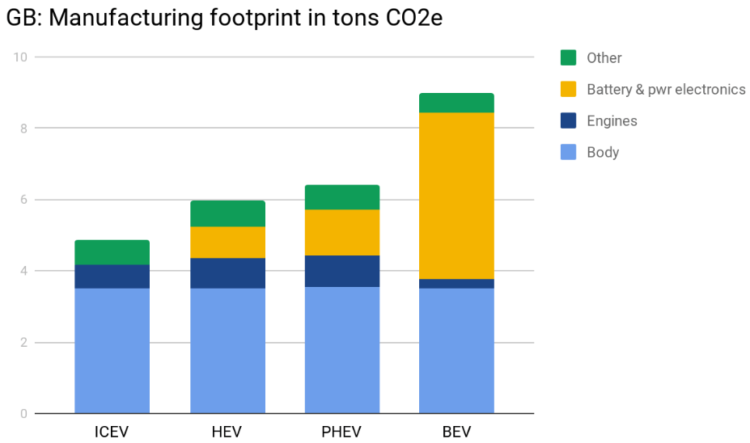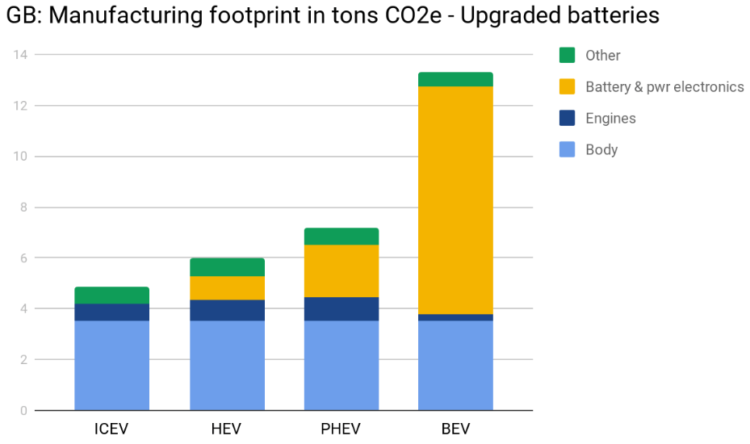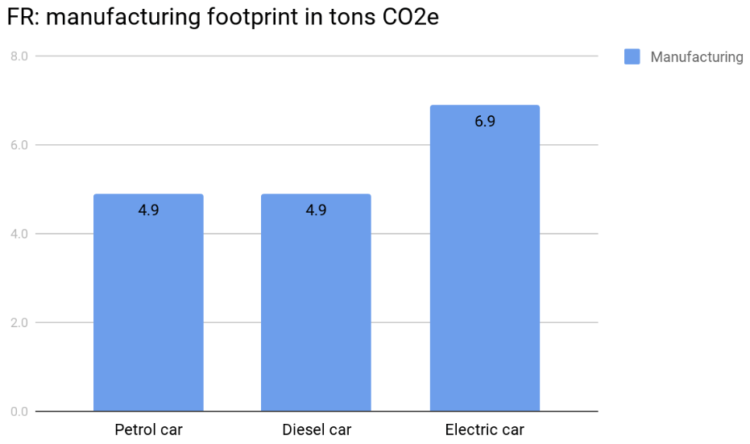Climate change & EVs: inconvenient numbers ?
The british study estimates the CO2e footprint related to the manufacturing of the different vehicle categories, often called grey energy:
Updated for contemporary models with an electric range more acceptable to consumers i.e. doubled, the difference in the manufacturing footprint becomes more stark.
The manufacturing footprint estimate in this study suggests the following comments:
– the place of manufacturing and related energy source(s) assumed are not clearly documented while they should play a prominent role in the footprint of the supply chain
– recycling of the battery pack at vehicle end of life, for instance for grid storage, if it eventually becomes scalable
The french study
The study mandated by the french environment agency is a variant of the british study, and was co-written by the same consultancy, PE International.
The assumptions were adapted to the specifics of the french market and car industry:
– Comparaison of three sub-compact with lengths ranging from 3.8 to 3.9m, one with a petrol engine (5.9 L/100km), one with a diesel engine (4.1 L/100km) and an electric car with a 24 kWh battery, and all three with 75 hp of power.
– The greenhouse gas impact is assessed over 150’000 km (93’226 mi).
– Electricity is accounted at 83 g CO2e/kWh for France in 2020, and 636 g CO2e/kWh for Germany. For reference, the british study assumes 390 g/kWh.
The french study lands on the following of the manufacturing footprint, projected for year 2020:
The grey energy embedded in the diesel and petrol cars are comparable to the british study, but the assessment of the electric car – though identical in its definition – is 23% lower.










